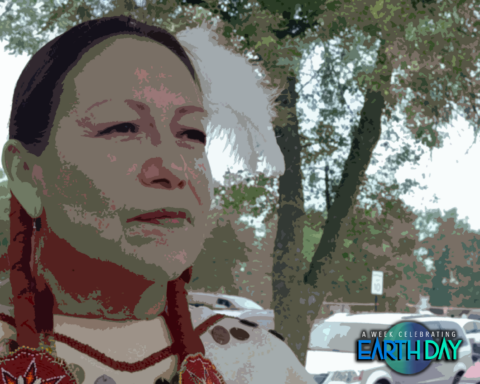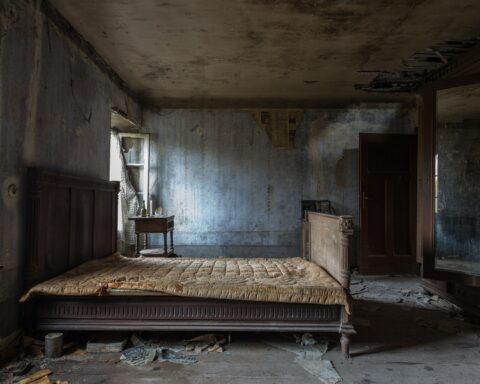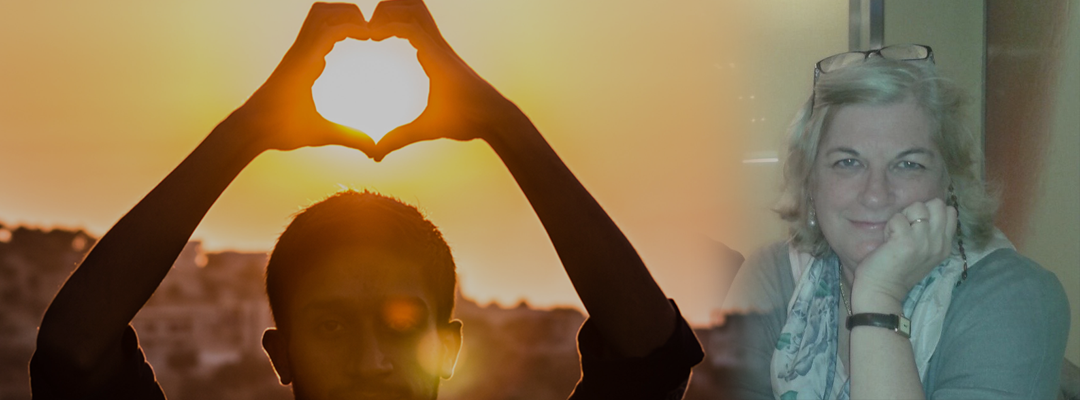Chris:
We were asked by the General Assembly of the church to look at the Doctrine of Discovery to understand its implications historically and the contemporary damage that it continues to do. I don’t think there is any more historic perspective among the Native American Presbyterians than yours and that of your people, the Shinnecock nation. So, I wonder if you could just begin by telling us something of who you are and of some of the history of the people you served. Then I hope you can share something about your role in healing work in your community, work that has both been controversial and courageous.
Mike:
I am Mike Smith. I was first called to become an executive for Indian ministry in the Synod of the Southwest. I served in that capacity from 1980 until 1985. I was then asked if I would consider coming back home to serve as pastor. I said I would consider it. Shortly after I got a letter from the trustees on Long Island saying, “We’re glad that you have accepted the call to turn back to your family.” I asked my dad, “What do I do with this?” He said, “Pack your bags,” and the rest is history. One of the attractions of coming back home was the fact that they were without a pastor for six years. I think many folks in the presbytery thought that they would collapse or merge. Unfortunately, that’s the position presbyteries take with many native churches. But often they don’t die, but they prosper. Thus, I came back home, and we had an exciting 33 years.
Chris:
In context, your church had been existing going back into the 1600s.
Mike:
I think our actual organization date as a Presbyterian congregation is 1741 which predated the General Assembly. So, we were already a church for probably four years. (or 40?)
As First Presbyterian Church Southampton was established in 1640 it is safe to assume that there was interaction with native people. The first Bible ever published in North America was published in the Algonquin language and the native translator, who was Mohican, ended up living here on Shinnecock. He worked with the European translator who was responsible for the translation, the Reverend John Elliott. And there are currently maybe 24 of the original Bibles left throughout the world. We have bits and pieces of it here at our local library in Southampton. There was a native catechism that was done in our language, which is kind of a forgotten language, but there is an attempt to bring the language back.
Chris:
Recovering a language is very difficult. You may remember David Cory, a very smart labor activist pastor in Brooklyn who learned Mohawk to minister to a congregation of NY native people who worked on the skyscrapers—I think that congregation has dispersed now.
Mike:
I do remember Cory—his granddaughter works in the Southampton area!
Chris:
I have the idea that there were originally seven or eight or nine tribes on Long Island and many of them did not survive the impact of the so-called discovery and the various guests that you had come into your land. But your people are the ones that lasted.
Mike:
Yeah, there were 13 tribes or nations on Long Island. Actually, they were
families, distinct families or clans which stretched from Brooklyn to Montauk.
The Western most group being the Canarsees, in what is now Brooklyn, out East to
the current town of Montauk which was populated by the Montaukets. Long Island
was known as the Montauk Confederacy. Of the 13 original tribes, only two have
retained any land base. Shinnecock is on a piece of land called the neck which
is part of our original territory. We got a simple title to it in 1859 when the
hills were “sold” so that the Long Island railroad could run from Manhattan to
Montauk. And at that time, they kind of extinguished the Montauk people (but
they still have a small holding left).
In 2010, the Federal government finally recognized or acknowledged who we were, saying we were here from 1640 and before. We basically live in our territorial land base. We’ve been here for thousands of years. That 2010 recognition of us as a distinct and independent native nation came after a great deal of discussion and deliberation, though we had been historically acknowledged by New York State. Parts of what made Federal recognition possible were the old session minutes within the church which helped to document our continuous assistance as a distinct people. So, the church has played an extremely significant role in the life of this community.
Chris:
Please say more about the decision and maybe the dynamics of going back to your
home church.
Mike:
In the late summer of 85, I accepted the call to come back home. My call
officially began on August 1st, 1985, with great welcome but we also challenged
one another to be participants in the mission of the church. Before I came back
home, for all the previous pastors who served here, we were among the churches
which received aid. Folks were giving us dollars to function as a congregation.
The first congregational meeting that I moderated, I made the statement that “this
is our church, it’s our budget and it’s our responsibility to fund it. And the
budget that we are presenting does not call for a dime coming in from
presbytery.”
My position on the budget of the church was that a budget says how we see ourselves as a congregation. If we are recipients of mission rather than participants in mission, it says something about us. They responded to the call. In my tenure, we never received a dime.
Chris:
You decolonized your church. You made that a condition in a sense of your employment.
Mike:
Yeah. And that was always an element that I had when I was in Arizona. That’s
how some churches made their living. They’d write to all these wealthy white
churches and they were taking in tens of thousands of dollars if not hundreds
of thousands of dollars. The church and the congregants had no notion of what
it meant to be participants in the mission life in the church. A couple of
churches bought into that. That was a cycle that I tried to break because I
think it’s important that we see ourselves as participants in rather
than recipients of the mission of the church.
Chris:
Now, I have been on your land, but is the land held communally?
Mike:
Yes. That’s why you cannot get a mortgage to build a house. If you will recall,
most of the houses were square in shape because what normally happened was that
you’d start off a house with shared space where everybody lived and then as the
parents saved up enough money, they would add on to it. Because it was a cash
economy, it was usually a gradual process without significant loans. And I
mean, that still exists today.
Chris:
Let me ask about the business of trying to do a casino, which was blocked on a
state level for many years and now maybe blocked for other reasons…
Mike:
That’s an interesting discussion and part of the reason why we talked about
SAMP and tried to implement a program like that. We were already dealing with a
substance abuse issue, and very few communities really look forward to the
social upheaval that comes with the introduction of a casino. Any social ills
that you might have in that community are only going to be exacerbated with an
influx of cash if folks are not prepared to deal with that impact. So that was
part of the impetus for SAMP as well.
Chris:
Now say what SAMP is.
Mike:
SAMP stands the Shinnecock Substance Abuse Mobilization Project. And we took that acronym because samp is a traditional native dish. The primary basis for that was white corn and it’s a soup-like meal. It was something that was used during these harsh winters out here on the east end of the island. We simply said, well, maybe we can draw on some of the strengths of the ancestors and utilize the acronym of SAMP to kind of nourish our spirits as we journey through this insidious disease called substance abuse or addiction, including gambling addiction.
SAMP has a board that we put together from the very beginning. There are 13 board members on SAMP to represent the 13 original tribes, nations, clans of Long Island back during the contact period. A majority of them had to be Shinnecock.
Chris:
First of all, how did people react to SAMP? I mean, you put your
ministry, I think, somewhat on the line to talk about things that were
embarrassing and honest. And of course, the whole society suffers from these
things. But we stereotype Native Americans so often with this stuff.
Mike:
I mean that whole issue was brought to light this past week. One of the things
that SAMP has been actively engaged in from conception is bringing education
about substance abuse into the community. But as my grandma would say,
“You can lead a horse to water, but you can’t make them drink.” And
you get that with people sometimes, but you go back to scripture and say
wherever one, two, or three are gathered in my name. So, if you change one
person’s journey, you will have accomplished something. So we make a change one
person at a time and you change the world by changing one person. And that’s
been my motto. And the model of SAMP is not about numbers. We look for quality
results. And so, we’ve been able to change some lives and to save some lives.
We have a clinic that’s funded through the New York state department of health. They have an American Indian health component. We’re in a contractual agreement with Southampton hospital which is now part of Stony Brook University Hospital to provide ambulatory care for the residents of the nation.
Lee:
Well I wanted to ask, to give our readers some context about your work with
substance abuse, I wonder if you can speak to some of the reasons behind the
substance abuse. I know that varies, but I’m wondering if it would help our
readers to really understand your context and the work that you do and how some
of those reasons may even be connected to the doctrine of discovery ideals.
Mike:
History tends to repeat itself. And as this country was colonized there was a
form of germ warfare which was part of that genocide that occurred. Smallpox
was introduced because of the Europeans and there was no immunity to it and
that devastation contributed to the colonization of North America. By analogy, people
often suggest that native people have a genetic proclivity to alcoholism,
allowing for new forms of cultural devastation. I would say that substance marketing
and abuse have contributed to weakening our cultures, but not primarily for
genetic reasons. As I understand it, some populations have an enzyme piece
missing which affects how the body metabolizes alcohol. [There is scientific
debate on this and much intermarriage, affecting whatever genetics a given
person has: https://alcohol.stanford.edu/alcohol-drug-info/i-bet-you-didnt-know/metabolism
]
Genetics play a little role. When I was working at a rehab for 11 years, one of the things I used to say was “Okay, even if you learned you were genetically predisposed to alcoholism, what are you going to do about it?” I would say the same thing to my kids because of my own past. I didn’t want a fatalism or determinism about this, but I did mean a warning. I used to tell them, “Look, you don’t stand a chance if you decide to pick up because you’re going to become an alcoholic or an addict. Because your father is.” I’m a grateful recovering alcoholic, and so I owed that to my kids and anyone I talked with that genetics might be a piece of it. But now that you know, what are you going to do?
And that becomes a challenge because I tell folks that it’s fairly simple to treat the medical and physical aspects of substance abuse, but it’s much more difficult to treat the spiritual and emotional aspects of it. What the substance allows people to do is to forget about the uncomfortable parts of themselves and aspects of their personalities that they don’t like. Recovery is not easy, but healing allows each of us to understand that in spite of the things that we’ve done, that’s not who we are. This is where our faith comes in as well. We keep it somewhat separate in the recovering community, but my faith tells me that I am loved unconditionally by my Creator—and by my church.
It wasn’t until I came home and elders would call me back and say, “Look young man, we’re not going to have our pastor picked up for public intoxication or driving while intoxicated.” So, I had a choice to make and I fought with that. I didn’t have one of those Damascus Road experiences, but I ended up stopping for a medical reason. I was diagnosed with Bell’s palsy.
I was in the pulpit one Sunday morning and I started slurring my letters and noticed folks were moving up and down. I was out all night drinking a couple nights before but not the night before. So, I went to the doctor and he told me that I have Lyme disease and he’s going to put me on an on a regimen of antibiotics. The typical alcoholic in me says, “Well, can I drink while I’m taking the medication?” He said, “You can, but I wouldn’t advise it because you see the mirror and you can’t smile now. Your face is distorted and if you drink, you are going to end up that way.”
And he said you’re developing an itch to drink with this medication and it’s an itch that’s going to come from the inside out. No matter how much you scratch, it’s not going away. So I took a 30 day regimen with no drinking and haven’t picked up a drink since. That was 33 years ago.
Chris:
I wanted to end the interview with this question: Do you think you took the
solidarity and fellowship back to your community when you accepted the call
back home?
Mike:
Yeah. We have the ability to be candid with one another and open up and talk
about some things that necessarily wouldn’t normally be talked about. That’s a
freeing experience. And we’re able to name the demons which possess, and that’s
what I do. I used to tell folks, when you’re in a rehab unit, you aren’t
supposed to mix recovery and religion, but I’m going to go into the realm of
religion for a moment. And I did. I talked about Jesus curing the man who was
possessed by demons (Mark 5: 1-20). And how did he do it? And we’d come up with
all these crazy notions and we confound everything. But, it’s very simple. He
named them.
That’s how we begin that healing process, in ourselves and in our communities. I named anger and greed and jealousy. I named those demons which possessed, and in the naming, they can no longer take me places that I don’t want to go. That’s why naming is such an important piece of this journey. It’s all biblical, and not just in that passage.
In the J or Yahwist version of creation in the second and third chapters of Genesis, the order of the first P or priestly chapter reverses and man and woman are created first. And what does God do? He gives Adam the ability to name all of the creatures within creation and with that power to name comes authority over the beings named.
Lee:
I was just talking to someone else today and naming came up. She mentioned a
lot of the Native American named places in Alaska. One of the first things that
happened when Europeans were coming over and claiming land was that they would
rename the places after themselves or where they were from. Native names were
about what the land was used for and most are lost or not commonly known. The names
of places, then, show how we view the land and our place in it, or our
claim—even discovery and possession—of it.
Chris:
Mike, what does the name Shinnecock mean?
Mike:
It means land of the stony shores.

Reverend
Michael F. Smith was born in Southampton Hospital and
raised on the Shinnecock Indian Reservation in Southampton, New York. He
attended SUNY College at Potsdam for three semesters and transferred to SUNY
College at Old Westbury where he received a B.A. in Liberal Studies in 1971.
Reverend Smith then attended the American Indian Summer Law Program at the
University of New Mexico in the summer of 1971, followed by one semester at
Hofstra University School of Law in 1971-1972. He received a Masters of
Divinity from Princeton Theological Seminary in 1979. Upon graduation from
Princeton Seminary he became the Associate Synod Executive for Indian
Ministries with the Synod of the South-west located in Phoenix, AZ. Reverend
Smith returned to Shinnecock Presbyterian Church in 1985 where he continues to
be pastor.
Reverend Smith is currently a member of the Board of Directors of Southampton
Hospital, the Long Island Council of Alcohol and Drug Dependencies (LICADD),
and the Peconic Sustainability Institute. He has been married for 41 years, has
4 children and 5 grandchildren.






Unbound Social